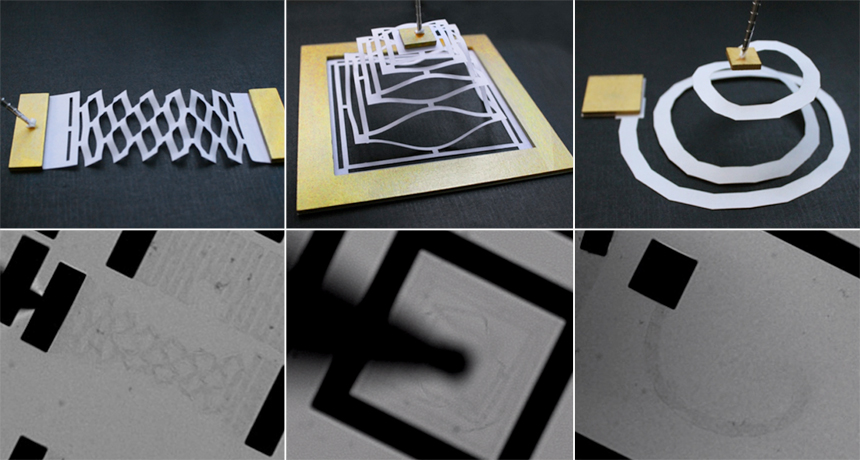World’s thinnest material stretches, bends, twists
Graphene gets manipulated under the microscope

MATERIALS IMITATE ART A series of cuts can produce unique shapes out of paper (top row) and graphene (bottom, shown in micrographs), which has a millionth the thickness of paper. Researchers created a stretchable sheet (left), a pyramid (center) and a spiral (right).
M. Blees







